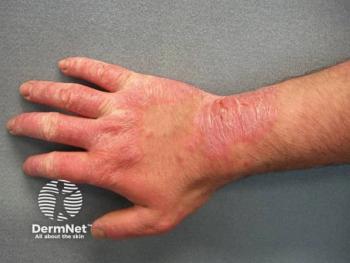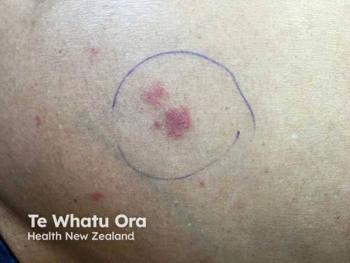
Approaches to Personalizing Systemic Treatment in Atopic Dermatitis
An expert discusses how personalizing systemic atopic dermatitis treatment requires considering factors such as disease severity, patient impact, treatment failures, age, comorbidities, and patient preferences when selecting between biologics and JAK inhibitors.
Episodes in this series

Video content above is prompted by the following:
The decision to escalate from topical to systemic therapy in atopic dermatitis requires careful evaluation of multiple factors beyond traditional body surface area measurements. Disease severity encompasses not only the extent of skin involvement but also the functional impact on patients’ daily lives, including sleep quality, work performance, and psychological well-being. Patients experiencing persistent symptoms despite 4 to 6 months of adequate topical therapy or those with high-impact areas such as hands, face, or genitalia may benefit from systemic intervention regardless of overall body surface area involvement.
Modern systemic treatment options for atopic dermatitis include several FDA-approved biologics and JAK inhibitors, each offering unique mechanisms of action and clinical benefits. Biologic therapies include dupilumab (targeting IL-4 and IL-13), tralokinumab and lebrikizumab (targeting IL-13), and nemolizumab (targeting IL-31). JAK inhibitors such as abrocitinib and upadacitinib provide oral treatment alternatives. These advanced therapies have revolutionized atopic dermatitis management, offering patients effective alternatives when traditional treatments prove insufficient.
Treatment selection requires a personalized approach considering patient age, comorbidities, lifestyle preferences, and treatment history. Dupilumab remains the only biologic approved for patients as young as 6 months, making it the preferred choice for many pediatric cases. For patients with cardiovascular disease or thromboembolism history, biologics may be preferred over JAK inhibitors due to safety considerations. Patient preference regarding oral vs injectable therapies along with considerations for travel, housing stability, and medication storage requirements also influence optimal treatment selection.
Newsletter
Like what you’re reading? Subscribe to Dermatology Times for weekly updates on therapies, innovations, and real-world practice tips.




















